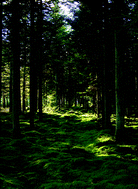Methodological problems in determining TCAA in soils—the discovery of novel natural trichloroacetyl containing compounds and their interference with a common method for determining TCAA in soil and vegetation
Abstract

* Corresponding authors
a
Dept. Geochemistry, Geological Survey of Denmark & Greenland, Ø. Voldgade 10, Copenhagen, Denmark
E-mail:
cal@geus.dk
Tel: +45 38142304
b Dept. Science, Systems and Models, Roskilde University, Universitetsvej 1, Roskilde, Denmark

 Please wait while we load your content...
Something went wrong. Try again?
Please wait while we load your content...
Something went wrong. Try again?
C. N. Albers, P. E. Hansen and O. S. Jacobsen, J. Environ. Monit., 2010, 12, 672 DOI: 10.1039/B920932H
To request permission to reproduce material from this article, please go to the Copyright Clearance Center request page.
If you are an author contributing to an RSC publication, you do not need to request permission provided correct acknowledgement is given.
If you are the author of this article, you do not need to request permission to reproduce figures and diagrams provided correct acknowledgement is given. If you want to reproduce the whole article in a third-party publication (excluding your thesis/dissertation for which permission is not required) please go to the Copyright Clearance Center request page.
Read more about how to correctly acknowledge RSC content.
 Fetching data from CrossRef.
Fetching data from CrossRef.
This may take some time to load.
Loading related content
